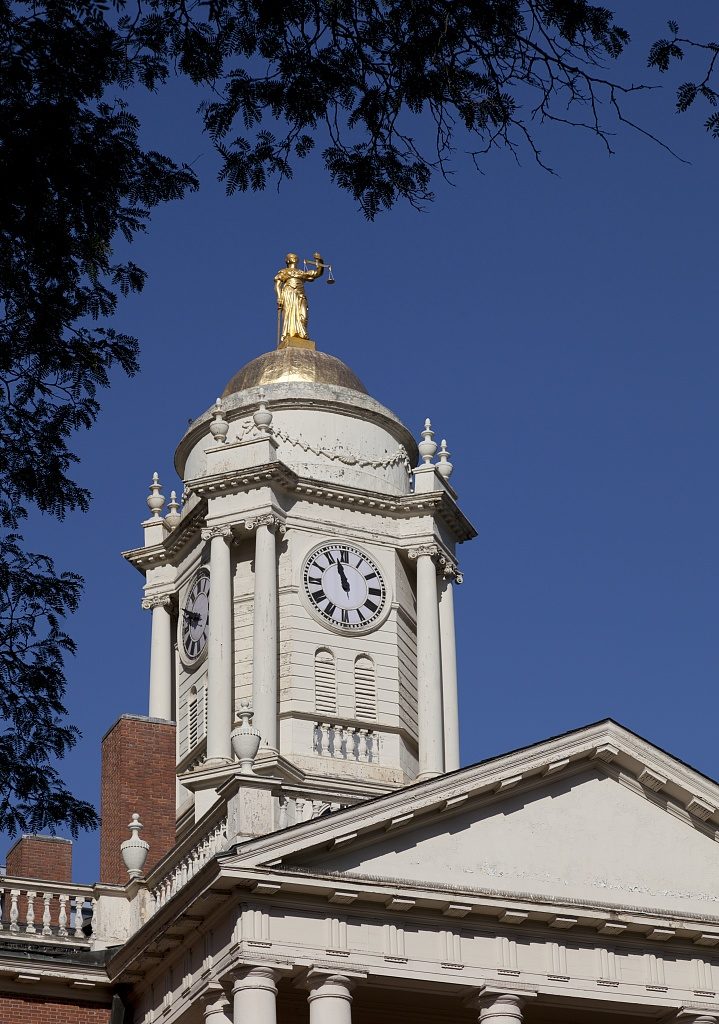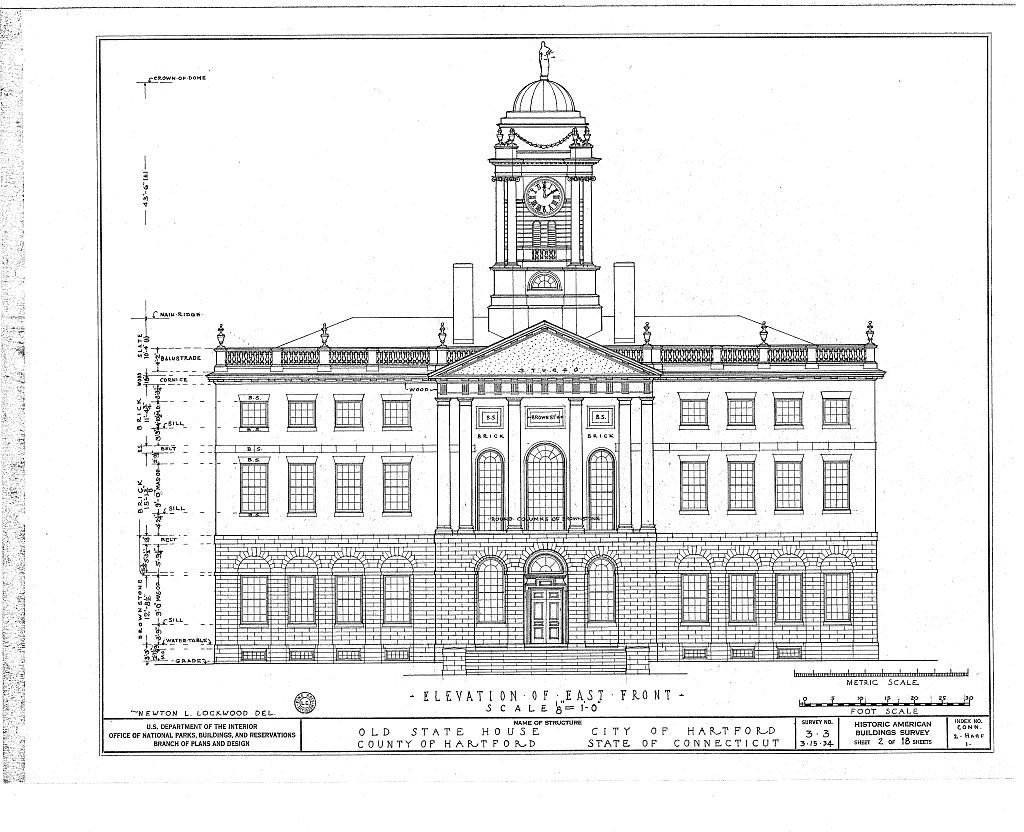
Connecticut’s Old State House. photo: Carol M. Highsmith, The George F. Landegger Collection of Connecticut Photographs in the Carol M. Highsmith’s America, Library of Congress, Prints and Photographs Division.
By Eileen Flynn
(c) Connecticut Explored Aug/Sep/Oct 2004
Subscribe/Buy the Issue!
If not for the intervention of many people over the past 30 years, visitors to Hartford’s Old State House would today see a parking lot. Fortunately, the Old State House is being reinvigorated under the auspices of the Connecticut Historical Society Museum, which is developing a more technologically oriented museum. A new exhibition, Witness to Change, has just opened thatillustrates the dramatic alterations that have occurred around the historic landmark and its neighborhood since 1796.
Hartford’s Old State House has been the site of major political maneuvering both before and after it served as Connecticut’s state house and later Hartford city hall. The site is where the Fundamental Orders, the first written constitution in the colonies, were signed in 1637. The present building, designed by architect Charles Bullfinch, was completed in 1796. The General Assembly continued to meet there until 1878.
Six years earlier Hartford won the right to be the state’s sole capital (it had previously shared the honor with New Haven) by a little over 6,000 votes, creating the need for a larger capitol building. Hartford citizens approved $500,000 and the General Assembly approved a site near Bushnell Park, formerly the home of Trinity College. When the state government moved to the new capitol in 1878 (the new capitol was dedicated in 1876), the Old State House began its tenure as Hartford city hall. It served this function until 1915 and then was used occasionally as a community center and a public comfort station until it underwent a restoration process to recreate the feeling of the colonial era. Colonial Revival woodwork was placed in the halls and a Colonial Revival courtroom was also created. The process was finished in 1920 and the building reopened to the public on New Year’s Day, 1921. Despite the renovations the building faced an uncertain future.
The Old State House’s survival since the 1920s has depended on the efforts of private citizens, organizations, and municipal, state, and federal governments. In 1921 Morgan Bulkeley formed a group called the Bullfinch Ten to raise funds to ensure the preservation of the building. In the 1930s renovations were done under WPA auspices. In 1961 the Old State House was named a National Historic Landmark and the Connecticut Historical Society reopened the building to the public. Despite its landmark status, the Hartford city council terminated preservation funding in 1975 and planned to tear down the Old State House and replace it with a parking lot. A citizen group again formed to protect the building and then earlier this year, the Connecticut Historical Society once again took on the operation of the Old State House for the benefit of visitors to this important site in downtown Hartford.
Eileen Flynn was a student at Trinity College and an intern for Connecticut Explored in spring 2004.
Explore!
Read an update to this story in the Fall 2018 issue.
Find a timeline for important events and restoration of the building HERE.
Read more stories about Historic Preservation on our TOPICS page.

